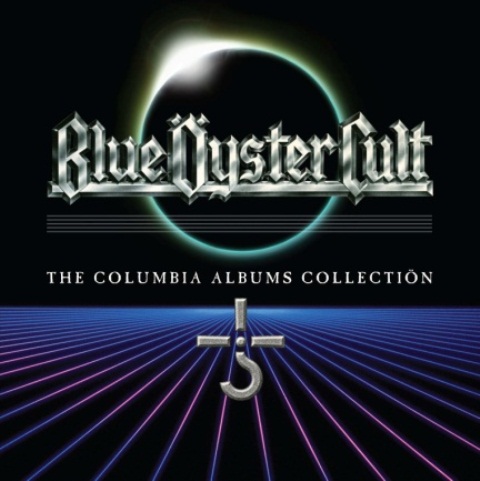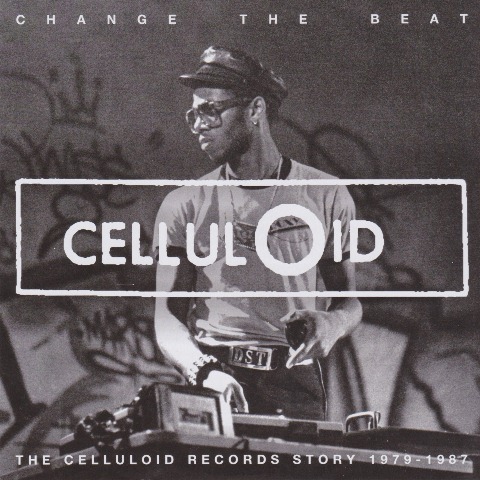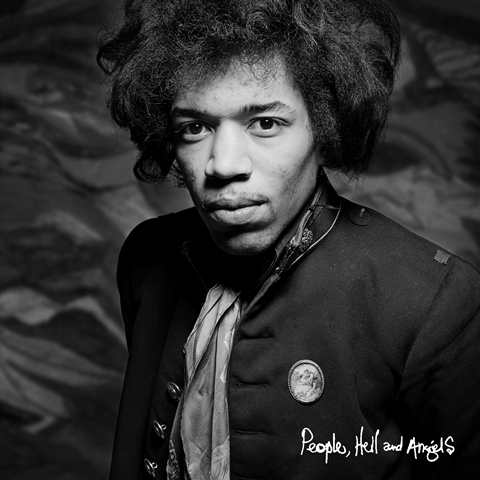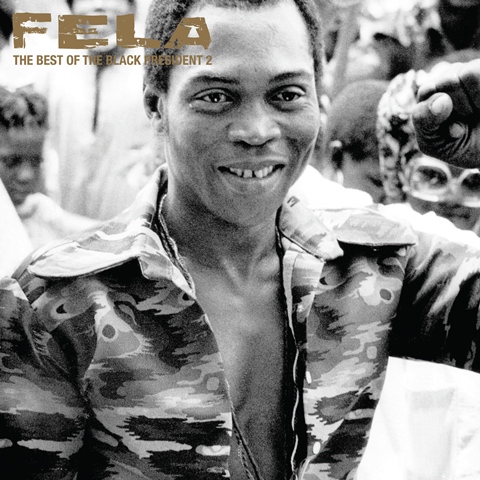Reissue CDs Weekly: Blue Öyster Cult, Celluloid Records, Jimi Hendrix, Fela Kuti | reviews, news & interviews
Reissue CDs Weekly: Blue Öyster Cult, Celluloid Records, Jimi Hendrix, Fela Kuti
Reissue CDs Weekly: Blue Öyster Cult, Celluloid Records, Jimi Hendrix, Fela Kuti
America's most perverse band, genre-defying label anthologised, unilluminating archive trawl and handy complilation of Afrobeat pioneer
 Blue Öyster Cult: The Columbia Albums Collection
Blue Öyster Cult: The Columbia Albums Collection
Blue Öyster Cult were about more than the music. They seemingly arrived fully formed with a ready-made mythos and mystery. Their first two albums had no pictures of the band and weird, Escher-esque art. Their symbol, an inverted hybrid question mark and cross, suggested they were in thrall to a shadowy cult. Song titles like “Cities on Flame With Rock ‘n’ Roll”, “7 Screaming Diz-Busters” and “Career of Evil” fostered the impression they were zeal-filled revolutionaries. Their third album, issued in 1974, included a track called “ME 262” and depicted them by said plane, flirtations with Nazi-era Germany common to far too many rock ‘n’ roll pinheads.
Mistakes will be made, but in the case of BÖC their singer was called Eric Bloom - hardly a handle fit for a potential goose-stepper. The non-music side of the band was created by music writers Richard Meltzer and Sandy Pearlman, who took the pliant Long Island outfit and transformed it into their vision of what rock could and should be. After a few false starts and a couple of name changes, the band signed with Columbia Records, who issued their first album in 1972. And voila, an almost-instant cult band
The music often wasn’t equal to the rest of the BÖC package. Meltzer and Pearlman’s lyrics were a pretty bonkers mix of portentiousness, threat and science fiction, but filling albums with what sounded like album cuts by early Alice Cooper, MC5 offcuts with a dash of Steppenwolf weren’t going to incinerate cities. Nonetheless, the band evolved and in Bloom, Donald Roeser and Albert Bouchard had great writers. Patti Smith mucking in did no harm. The flawless and atypical “Don’t Fear the Reaper” was their peak, and remains one of rock’s most perfect songs (and the subject of a deeply unfunny Saturday Night Live skit seen at the end of this). They got bigger and bigger, rockier and rockier, moved away from Meltzer, Pearlman and New York's studios, embraced metal, became less and less interesting, and more and more cartoonish. Hearing the early material again is a reminder of how much Australia's Radio Birdman improved on one of their prime role models.
This superbly packaged box includes their 15 Columbia albums with bonus tracks, a pair of double CDs of live tracks and studio rarities, a live DVD and the chance to download a quartet of live shows. The booklet includes a short essay by Patti Smith guitarist and writer Lenny Kaye. Buyers should be aware that five of the albums included are as per the 2001 and 2007 reissues. Their early Elektra-era material is not included, so this fine tribute to one of America’s most perverse bands is almost the last word on Blue Öyster Cult.
 Various Artists: Change the Beat – The Celluloid Records Story 1979-1987
Various Artists: Change the Beat – The Celluloid Records Story 1979-1987
Although born in Paris, Celluloid Records was based in New York from 1980. This double CD celebrates an innovative, vital label. It also tells a story of New York that’s a fascinating counterpoint to that of the Blue Öyster Cult’s. In short order, after arriving in the city in September 1980 Celluloid’s Jean Karakos hooked up with Bill Laswell and began issuing some of the most important, trail-blazing records of the era. He caught the blur between punk/new wave, jazz, rap and what would become hip-hop with a flair marking him as having only one peer: the equally inquisitive Malcolm McLaren. Unlike McLaren though, Karakos had many acts to play with. Here, The Clash back Futura 2000 on “The Escapades of Futura 2000.” John Lydon is heard on Timezone’s “World Destruction.” Manu Dibango, Herbie Hancock and Ginger Baker meet the beat too. Mavericks Shockabilly and Snakefinger fit right in with this company. So do African exports Bobongo Stars and Toure Kunda. Indispensable.
 Jimi Hendrix: People, Hell & Angels
Jimi Hendrix: People, Hell & Angels
According to the press release “People, Hell & Angels offers tantalizing new clues as to the direction Hendrix was considering for First Rays of the New Rising Sun, his planned double album sequel to 1968's ground-breaking Electric Ladyland.” It does nothing of the sort. These disparate recordings from 1968 and 1969 that were never meant for release show Hendrix playing for the sake of playing – because he had to. Nothing new is said, there are no new clues. Most tracks are familiar. Hearing “Hey Gypsy Boy”, “Izabella”, “Crash Landing”, “Easy Blues”, “Earth Blues”, “Villanova Junction Blues” and “Hear my Train a Comin'” again - albeit unbowdlerised, in great fidelity or slightly different takes/edits - is hardly revelatory. Nor is “Let Me Move You”, actually a showcase for his old boss, the sax player Lonnie Youngblood. “Mojo Man” finds him backing southern soul singers Albert & Arthur Allen. These workouts (not sketches for compositions), mainly blues, do little to alter or add to perceptions of Hendrix. When will sense prevail and all the archive material be issued in one go, chronologically sequenced as a box set rather than eking it out over individual releases? Hearing it that way might explain the path Hendrix was following while ducking the public eye. For now, this exasperating release is available as a download. It is issued in physical form on 1 April.
 Fela Kuti: The Best of the Fela Kuti Black President 2
Fela Kuti: The Best of the Fela Kuti Black President 2
Even while he was alive, any understanding of Fela Kuti’s releases was close-to impossible due to volume and the range of different configurations assembled in various territories. After his death, like the Hendrix catalogue, things became even more challenging. In joining the umpteen compilations on the market, The Best of the Black President 2 has its work cut out trying to attract attention. Four things set this double CD apart: an introductory essay by Akon; that it’s part of a comprehensive and coherent reissue programme by Knitting Factory Records which follows his estate granting them the rights to re-release his catalogue; that the deluxe edition incorporates a DVD of Kuti and his band at Glastonbury Festival in 1984 and that it focuses on lengthy workouts. The latter matters most. Go for “Black Man’s Cry”, then the 16-plus minute “Sorrow Tears and Blood”. After that, home in on the compilation’s zenith, 1975’s “Everything Scatter.” As an entry point this set succeeds. More than that, at its best, some of the music here is amongst the most intense ensemble playing ever.
Watch Christopher Walken make fun of Blue Öyster Cult’s “Don’t Fear the Reaper” on Saturday Night Live
Buy
Share this article
The future of Arts Journalism
You can stop theartsdesk.com closing!
We urgently need financing to survive. Our fundraising drive has thus far raised £33,000 but we need to reach £100,000 or we will be forced to close. Please contribute here: https://gofund.me/c3f6033d
And if you can forward this information to anyone who might assist, we’d be grateful.

Subscribe to theartsdesk.com
Thank you for continuing to read our work on theartsdesk.com. For unlimited access to every article in its entirety, including our archive of more than 15,000 pieces, we're asking for £5 per month or £40 per year. We feel it's a very good deal, and hope you do too.
To take a subscription now simply click here.
And if you're looking for that extra gift for a friend or family member, why not treat them to a theartsdesk.com gift subscription?
more New music
 Album: Erlend Apneseth - Song Over Støv
Norwegian musical impressionist’s journey into the centre of a vortex
Album: Erlend Apneseth - Song Over Støv
Norwegian musical impressionist’s journey into the centre of a vortex
 Music Reissues Weekly: Yeah Man, It's Bloody Heavy
The ne plus ultra of British heavy rock
Music Reissues Weekly: Yeah Man, It's Bloody Heavy
The ne plus ultra of British heavy rock
 Album: Bryan Ferry and Amelia Barratt - Loose Talk
A match made in urban nightlife and the mysteries of everyday living
Album: Bryan Ferry and Amelia Barratt - Loose Talk
A match made in urban nightlife and the mysteries of everyday living
 Album: Will Smith - Based on a True Story
Big Willie’s back - but maybe he should’ve stayed home
Album: Will Smith - Based on a True Story
Big Willie’s back - but maybe he should’ve stayed home
 Album: Perfume Genius - Glory
Album seven from an artist carving out his own space in the most modernist of ways
Album: Perfume Genius - Glory
Album seven from an artist carving out his own space in the most modernist of ways
 Album: Alison Krauss & Union Station - Arcadia
Their first album in 14 years looks hard at the past, and its role in the present
Album: Alison Krauss & Union Station - Arcadia
Their first album in 14 years looks hard at the past, and its role in the present
 Lauren Mayberry, Barrowland, Glasgow review - solo star stays too close to the day job
The Chvrches singer mixed some great tunes with an overly heavy sound.
Lauren Mayberry, Barrowland, Glasgow review - solo star stays too close to the day job
The Chvrches singer mixed some great tunes with an overly heavy sound.
 Album: Toria Wooff - Toria Wooff
Assured but too measured debut album from Americana-inclined singer-songwriter
Album: Toria Wooff - Toria Wooff
Assured but too measured debut album from Americana-inclined singer-songwriter
 Music Reissues Weekly: Too Far Out - Beat, Mod & R&B From 304 Holloway Road 1963-1966
Maverick producer Joe Meek’s maximum-impact approach to the beat-group scene
Music Reissues Weekly: Too Far Out - Beat, Mod & R&B From 304 Holloway Road 1963-1966
Maverick producer Joe Meek’s maximum-impact approach to the beat-group scene
 Album: Selena Gomez and Benny Blanco - I Said I Love You First
An album by a pair of loved-up Hollywood celebs that is, whisper it, rather good
Album: Selena Gomez and Benny Blanco - I Said I Love You First
An album by a pair of loved-up Hollywood celebs that is, whisper it, rather good
 Album: The Horrors - Night Life
A new line-up proves no hindrance to a band bringing electro-rock zip to the darkness
Album: The Horrors - Night Life
A new line-up proves no hindrance to a band bringing electro-rock zip to the darkness
 Mercury Rev, Islington Assembly Hall review - the august US psychedelic explorers cover all bases
Balance is maintained between the anticipated and the spontaneous
Mercury Rev, Islington Assembly Hall review - the august US psychedelic explorers cover all bases
Balance is maintained between the anticipated and the spontaneous

Add comment